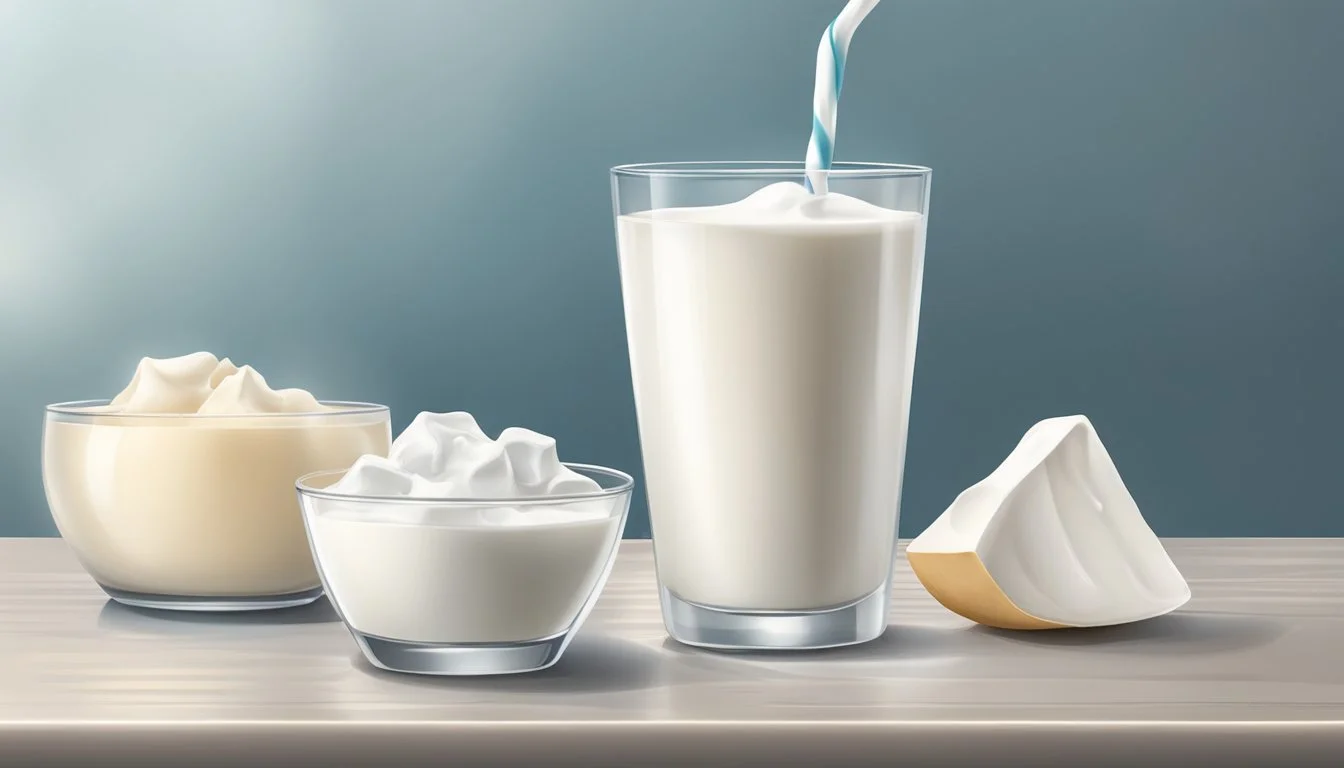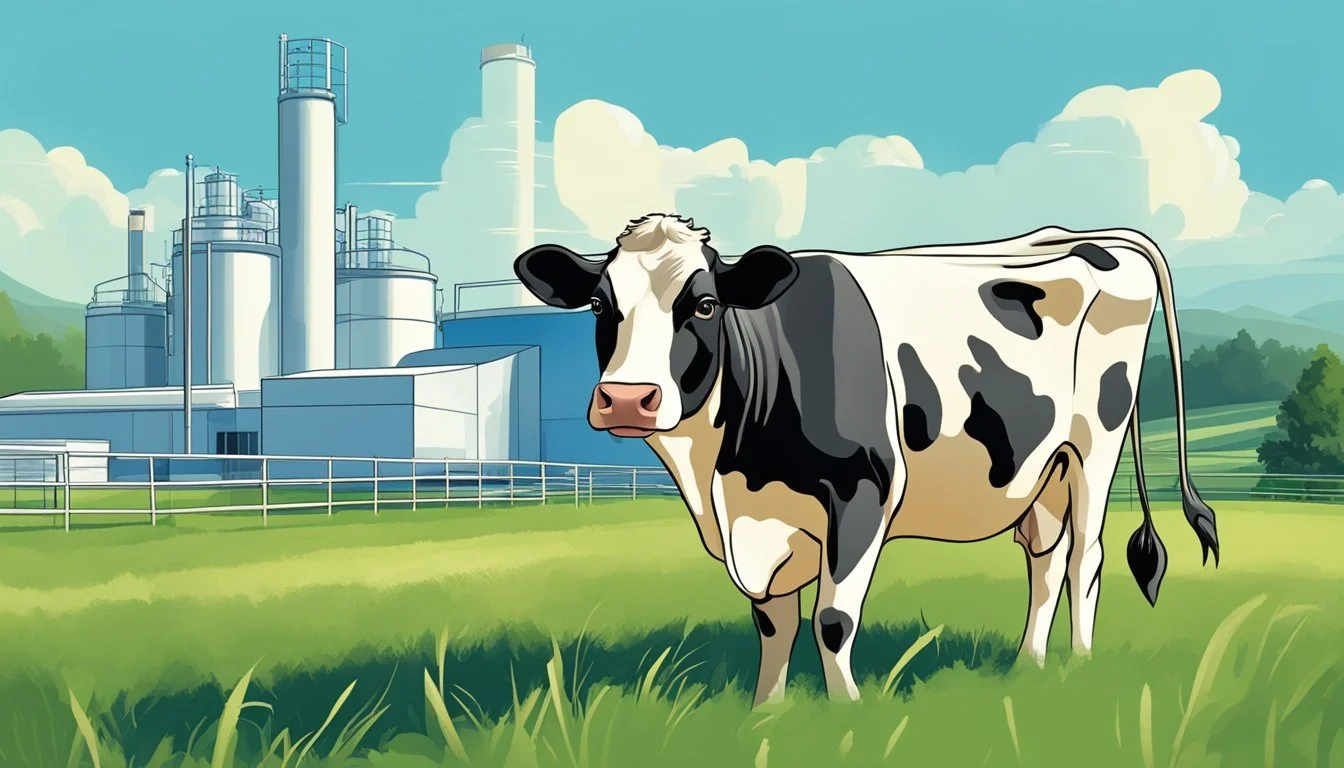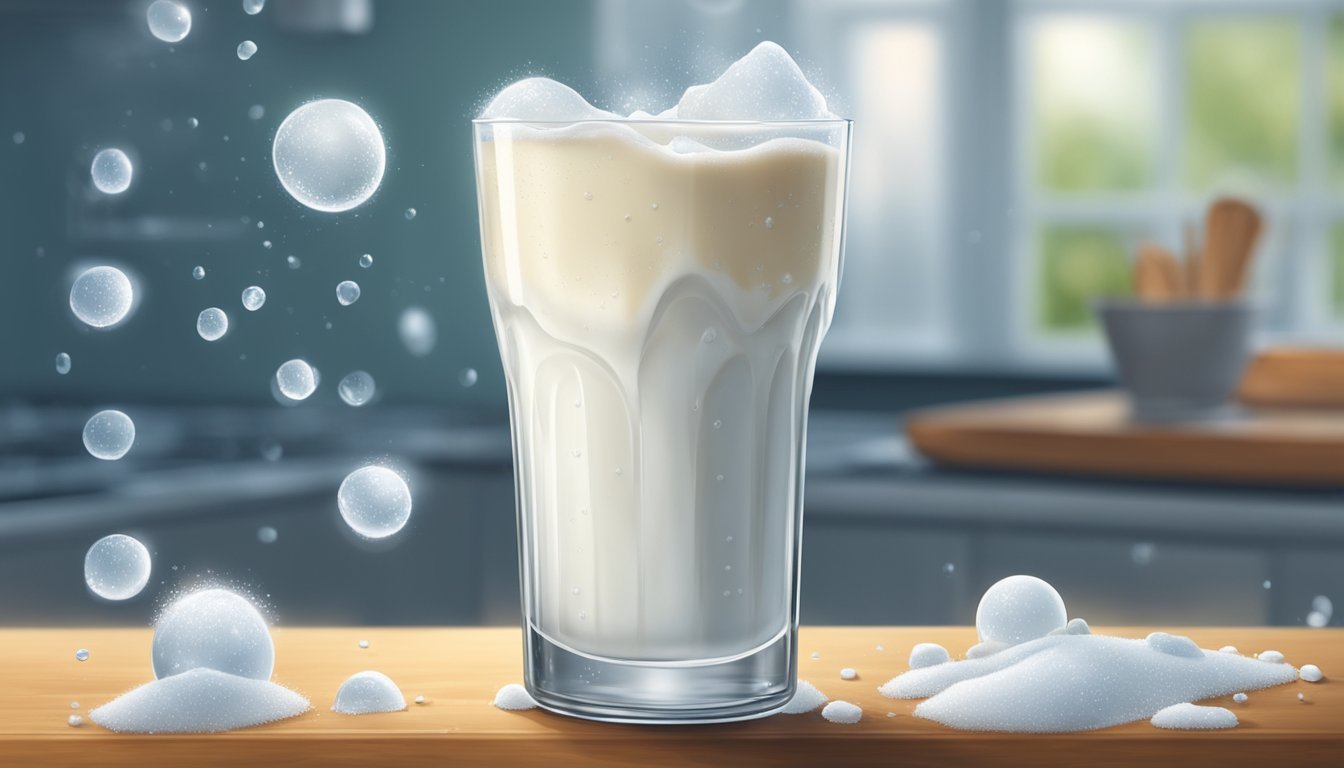Fresh vs. Frozen Milk: Exploring Nutrition, Taste, and Practicality
Milk is a staple in many households, but its short shelf life can be a challenge. Freezing milk offers a practical solution for those looking to extend its usability. Milk can be safely frozen for up to 3 months, preserving its nutrients and flavor.
Freezing milk is simple and straightforward. Pour milk into freezer-safe containers, leaving about an inch of space at the top to allow for expansion. Plastic containers work best, as glass may crack during the freezing process. For convenience, consider freezing milk in smaller portions for easier thawing and use.
When ready to use, thaw frozen milk in the refrigerator for 24-36 hours. A slight separation may occur, but this is normal. Shake the milk well before using to redistribute any separated components. Frozen and thawed milk is best used for cooking or baking rather than drinking, as the texture may change slightly.
Types and Differences
Milk comes in various forms, from fresh dairy to frozen options and plant-based alternatives. Each type has unique characteristics, nutritional profiles, and ideal uses in cooking and consumption.
Fresh Milk Essentials
Whole milk contains about 3.25% milkfat, offering a rich, creamy taste. It provides essential nutrients like calcium, protein, and vitamins. Low-fat and skim milk varieties have reduced fat content for those seeking fewer calories.
Goat milk is another fresh option, with a slightly different freezing point than cow's milk. It can be easier to digest for some people.
Non-homogenized milk, often called cream-top, has a layer of cream that rises to the top. This type preserves milk's natural state and is favored by some for its traditional qualities.
Frozen Milk Overview
Freezing milk can extend its shelf life significantly. Cow's milk typically freezes between -0.564°C and -0.516°C (30.985°F to 31.071°F). When properly frozen and thawed, milk retains most of its nutritional value.
Frozen milk may experience some separation upon thawing. Shaking or blending can help restore its consistency. It's best used within 3-6 months of freezing for optimal quality.
Freezing can affect milk's texture slightly, making it less ideal for drinking but still suitable for cooking and baking.
Plant-Based Milks and Freezing
Plant-based milks offer dairy-free alternatives suitable for various dietary needs. Popular options include:
Almond milk: Low in calories, high in vitamin E
Soy milk: Protein-rich, closest to dairy milk nutritionally
Oat milk: Creamy texture, often fortified with vitamins
Coconut milk: Rich in healthy fats, distinct flavor
Freezing plant-based milks is possible but may alter texture more significantly than dairy milk. Separation is common upon thawing. These milks are best used in cooking or smoothies after freezing.
Dairy Alternatives
Flax milk provides omega-3 fatty acids and is low in calories. It's a good option for those with nut allergies.
Rice milk is hypoallergenic but lower in protein compared to other alternatives. It's often fortified with calcium and vitamins.
Pea protein milk is emerging as a nutritious option, offering a protein content comparable to dairy milk.
Hemp milk contains omega-3 and omega-6 fatty acids, making it a heart-healthy choice.
Each alternative has unique nutritional benefits and flavor profiles, catering to different dietary preferences and restrictions.
Freezing Process
Freezing milk preserves its nutritional value while extending shelf life. The process involves careful preparation and proper storage techniques to maintain quality.
Preparing Milk for Freezing
Pour milk into freezer-safe containers, leaving about an inch of space at the top. This allows for expansion as the liquid freezes. Airtight plastic containers or glass jars work well. Label each container with the date of freezing.
For easier thawing, consider freezing milk in smaller portions. Ice cube trays can be used to freeze individual servings. Once frozen, transfer the cubes to a freezer bag.
Whole milk and lower-fat varieties can be frozen, but separation may occur. Shake well after thawing to redistribute the fat content.
Best Practices for Freezing Dairy Milk
Freeze milk before its expiration date for best results. Set freezer temperature below 0°F (-18°C) to ensure rapid freezing and prevent large ice crystals from forming.
Store frozen milk away from strong-smelling foods to prevent odor absorption. Use within 3-6 months for optimal flavor and texture.
When ready to use, thaw milk in the refrigerator overnight. Avoid thawing at room temperature to prevent bacterial growth.
Freezing Non-Dairy Milks
Plant-based milks like almond, soy, and oat can also be frozen. Shake well before freezing as separation is common.
Non-dairy milks may change texture slightly when thawed. Use frozen plant milks in smoothies or cooking rather than drinking.
Homemade nut milks freeze better than store-bought versions due to fewer additives. Freeze in small portions for convenience.
Some non-dairy creamers and coffee additives may not freeze well due to their composition. Check product labels for freezing recommendations.
Storage and Thawing
Proper storage and thawing techniques are crucial for maintaining milk quality and safety. Freezing milk extends its shelf life, while careful thawing preserves its nutritional value and taste.
Optimal Freezer Conditions
Store milk in a freezer set to 0°F (-18°C) or below. Use freezer-safe containers or bags designed for milk storage. Leave about an inch of space at the top to allow for expansion during freezing. Place milk in the back of the freezer, away from the door, to maintain a consistent temperature.
Label containers with the date of freezing. This practice helps track storage duration and ensures older milk is used first. For best quality, use frozen milk within 3-6 months.
Divide milk into smaller portions before freezing. This approach allows for easier thawing and reduces waste.
Thawing and Defrosting Techniques
Thaw frozen milk in the refrigerator. This method is safest and maintains milk quality. Allow 24-36 hours for complete thawing.
For quicker thawing, place the container in cold water. Change the water every 30 minutes. Avoid using hot water or microwaves, as these can create hot spots and degrade milk quality.
Once thawed, shake the milk well to redistribute any separated fats. Use thawed milk within 24 hours for best quality and safety.
Shelf-Life and Expiration Considerations
Frozen milk can last up to 6 months when stored properly. After thawing, consume within 3-4 days.
Opened, thawed milk should be used within 24 hours. Unopened, thawed milk can last up to 5 days in the refrigerator.
Check for signs of spoilage before consuming thawed milk. These include off-odors, unusual colors, or curdling. When in doubt, discard the milk.
Remember, freezing may affect milk's texture and taste slightly. It's still safe to consume if properly stored and handled.
Quality and Safety
Freezing milk affects its quality and safety in several ways. Proper handling is essential to maintain nutritional value and prevent bacterial growth when freezing and thawing milk.
Changes in Milk Quality
Freezing alters milk's texture and appearance. When thawed, milk may separate, with fat rising to the top. This separation doesn't impact nutritional value but can affect taste and texture.
Shaking thawed milk vigorously helps redistribute fat globules. Some consumers report a slightly grainier mouthfeel in previously frozen milk.
Freezing can cause minor nutrient losses, particularly in vitamins A and B. However, these losses are minimal, and frozen milk retains most of its nutritional profile.
Safety Precautions for Consuming Thawed Milk
Thaw frozen milk in the refrigerator, not at room temperature. This process takes 24-36 hours for a gallon. Rapid thawing promotes bacterial growth and compromises safety.
Use thawed milk within 3-7 days. Shake well before consuming to redistribute components.
Check for off-odors or unusual textures before drinking. If milk smells sour or appears curdled, discard it.
Maintain proper temperature control. Keep thawed milk at or below 40°F (4°C) to inhibit bacterial growth.
Avoid refreezing thawed milk, as this can lead to further quality degradation and increased risk of bacterial contamination.
Utilization of Thawed Milk
Thawed milk offers versatile applications in the kitchen. It can be used for various culinary purposes, from cooking and baking to creating refreshing beverages.
Cooking and Baking with Thawed Milk
Thawed milk performs well in most cooking and baking recipes. It can be used to make creamy sauces, soups, and gravies. In baking, thawed milk works for cakes, muffins, and bread recipes.
For best results, shake the thawed milk thoroughly before use to recombine any separated components. This ensures a consistent texture in your dishes.
When making custards or puddings, thawed milk may result in a slightly grainier texture. To mitigate this, consider using it in recipes with stronger flavors that can mask any subtle changes.
Thawed milk is ideal for casseroles, quiches, and savory pies. It also works well in pancake and waffle batters, producing fluffy and delicious breakfast treats.
Making Beverages and Smoothies with Thawed Milk
Thawed milk is excellent for creating various beverages and smoothies. It blends seamlessly into protein shakes, fruit smoothies, and milkshakes, providing a creamy base.
For hot beverages like coffee, tea, or hot chocolate, thawed milk can be used as a substitute for fresh milk. Simply heat it gently and stir well before adding to your drink.
Thawed milk works well in iced coffee and tea preparations. It can also be used to make homemade ice cream or frozen yogurt, though the texture may be slightly different from versions made with fresh milk.
When making smoothies, combine thawed milk with frozen fruits for a thick, frosty consistency. Add honey or maple syrup for sweetness, and consider including ingredients like chia seeds or protein powder for added nutrition.
Advanced Topics
Freezing milk involves complex scientific principles and has broader implications beyond simple preservation. Understanding these aspects can help optimize storage methods and make informed decisions about milk consumption.
The Science of Milk Freezing
Milk freezes at slightly different temperatures depending on its composition. Whole milk typically freezes around -0.54°C (31.028°F), while skim milk freezes at a slightly higher temperature due to its lower fat content.
The freezing process can affect milk's structure. Ice crystals form and expand, potentially disrupting fat globules and protein structures. This can lead to slight changes in texture upon thawing.
Nutrients in milk generally remain stable during freezing. However, some vitamins, particularly vitamin C, may degrade slightly over time in frozen storage. Pasteurized and UHT milk can be frozen, but their shelf life after thawing may differ.
Environmental and Economic Considerations
Freezing milk can help reduce food waste and save money. By extending milk's usability, consumers can buy in bulk during sales or prevent spoilage of excess milk.
Plastic containers are preferred for freezing milk, as they allow for expansion. Cardboard cartons may leak or burst. This choice impacts recycling and environmental concerns.
Energy use is a factor to consider. Freezing and maintaining frozen milk requires electricity, which has both economic and environmental costs. However, this may be offset by reduced transportation needs if fewer shopping trips are made.
Frozen milk can be used to make butter or cheese, providing versatility in home cooking and potentially reducing the need for additional dairy purchases.






